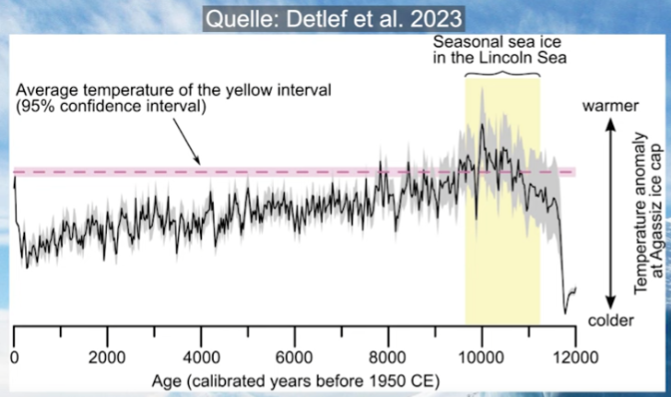Researchers have discovered that the 300 or so polar bears living in SE Greenland (below 64 degrees N) are so genetically distinct and geographically isolated that they qualify as a unique subpopulation, adding one more to the 19 subpopulations currently described by the IUCN Polar Bear Specialist Group.

Previously, polar bear researchers simply assumed all of the bears in East Greenland were part of the same subpopulation but no field work had been conducted in the extreme southern area until 2015-2017. When they included this region, they got a big surprise: now they are spinning it as significant for polar bear conservation (Laidre et al. 2022).
From a new paper by Kristin Laidre and colleagues today in the journal Science, the map below shows this newly-defined population in red in SE Greenland (south of 64 degrees N), which is known as the King Frederick VI Coast:
Background
Apparently the few bears found on the southwestern tip of Greenland, near the former Norse ‘Eastern Settlement’ (dark blue in the above map) do not belong to this new subpopulation, which means that recent problems on the SW tip of Greenland–including a horse that was killed in the winter of 2016–cannot be blamed on members of this new subpopulation.
My own work on ancient polar bear remains did not reveal any archaeological specimens from that region (Crockford 2022). There are only a few known ancient Inuit sites in the area, primarily around Timmiarmiit.
Danish naval officer Wilhelm August Graah explored the SE coast in 1828-30 while looking for the lost Norse Eastern Settlement and, having rounded the tip at Cape Farewell, described the now-extinct SE Greenland Inuit (Graah 1837). In 1929, he named the region the King Frederick VI Coast but was prevented from travelling further than the area of Koge Bay (see map above) by thick pack ice.
Currently, the largest community on the SE coast is further north, at Tasiilaq, but the realm of SE Greenland polar bears is currently uninhabited by humans. Few hunters venture so far south, even temporarily.
The New Population

This newly-discovered population of SE Greenland bears apparently uses marine-terminating glacier fronts (including calved pieces of freshwater glaciers) that exist in deep coastal fjords as platforms to hunt ringed seals when the land-locked fast ice disappears. As they also do in Svalbard, some ringed seals use glacier-front habitat year round, likely because the presence of ice generates upwelling of nutrients and thus, fish to eat (Hamilton et al. 2016, 2017). In other words, ringed seals and polar bears throughout the Arctic are almost certainly capable of utilizing glacier-front habitats where ever they occur, as they have been doing in SE Greenland.
According to the authors:
Southeast Greenland bears appear to have adapted their movements to the region’s specific physical geography. The high-velocity East Greenland Coastal Current (12) seasonally brings a narrow band of low-concentration pack ice south of 64°N and around the southern tip of Greenland (figs. S8 to S10) (13). All tracked Southeast Greenland bears that moved out of the fjords (n = 11) became caught in this
current’s drift ice and were transported southward toward Cape Farewell, drifting an average of 189 km in <2 weeks (fig. S4). Notably, all swam ashore and walked via land to their home fjord within 1 to 2 months, demonstrating high site fidelity. Bears in Southeast Greenland must remain inside fjords or risk export to human inhabited areas of South Greenland or into the North Atlantic.Lairdre et al. 2022:1333.
The map above from the Laidre paper shows the genetic distinctiveness of this subpopulation (‘SEG’). Evidence of some immigration from the north indicates the group is not totally isolated and the authors mention that new immigrants soon learn to live in this glacier-front environment (Laidre et al. 2022:1337).
However, the genetic data also indicate the subpopulation has been separate for only about 200 years (189-264). This suggests to me the possibility that the thick ice at around 65 degrees N that stopped the northward travel of Graah in 1829 mentioned above may have been a decades-long phenomenon that also trapped polar bears on the SE coast and kept them entirely separate from NE Greenland bears until very recently. The authors did not mention this as a possibility: in fact, they didn’t provide any explanation at all for why the populations became separated about 200 years ago or comment why such distinctive genetic signatures would be evident after such a short period of evolutionary time.
Of course, the authors suggest this new subpopulation–although unnoticed by them for decades while easily surviving an ice-free period similar to conditions predicted for the High Arctic in the late 2100s–must be conserved to protect the genetic diversity of the species (Peacock 2022). In other words, they see it primarily as welcome additional pressure to protect polar bears from global warming.
Peacock concludes [my bold]:
It is unclear whether the Agreement [1973 International Agreement to Protect the Polar Bear], which had been so successful in bringing back the global populations from overharvest, will be an adequate mechanism to protect polar bears in the face of reduced habitat due to climate change. The population of southeast Greenland is a small, genetically distinct group of bears with a distinctive ecology. In the conservation of this polar bear population, we find an explicit test of the modern influence of the half-century-old international Agreement on the Conservation of Polar Bears.
Peacock 2022: 1268
I truly appreciate Lily Peacock’s acknowledgement that polar bear numbers have indeed increased since the 1960s, as I have been criticized for pointing that out (Crockford 2017, 2019; Crockford and Geist 2018). Leaving aside all the pointless hand-wringing about impending doom based on implausible climate models, the existence of this new subpopulation is interesting but hardly a game-changer. In two papers and several press releases, there is no mention of the fact that polar bears in general were savvy and flexible enough to have survived through several warm interglacials that were warmer than today (Cronin et al. 2014; Cronin and Cronin 2015) or that many Svalbard bears recently moved onto the sea ice or to Franz Josef Land when sea ice on the west coast of the archipelago became scarce (Aars et al. 2017; Andersen et al. 2012; Crockford 2019).
Bottom line: I’m OK with 20 subpopulations of polar bears and satisfied that adding SE Greenland to the mix, separate from NE Greenland, is the right thing to do. I’m thrilled to see evidence that glacier-front habitat can support a small polar bear population even without summer sea ice. Now let’s see the population size estimate for all of East Greenland we’ve been waiting to see for more than ten years (Laidre et al. 2012). Are there only about 600 bears (as one PBGS estimate put it) or about 2,000 (the ball-park estimate used by the 2015 Red List assessment)? Or are there even more?
References
Aars, J., Marques,T.A, Lone, K., Anderson, M., Wiig, Ø., Fløystad, I.M.B., Hagen, S.B. and Buckland, S.T. 2017. The number and distribution of polar bears in the western Barents Sea. Polar Research 36:1. 1374125. doi:10.1080/17518369.2017.1374125
Andersen, M., Derocher, A.E., Wiig, Ø. and Aars, J. 2012. Polar bear (Ursus maritimus) maternity den distribution in Svalbard, Norway. Polar Biology 35:499-508.
Crockford, S.J. 2017. Testing the hypothesis that routine sea ice coverage of 3-5 mkm2 results in a greater than 30% decline in population size of polar bears (Ursus maritimus). PeerJ Preprints 2 March 2017. Doi: 10.7287/peerj.preprints.2737v3 Open access. https://doi.org/10.7287/peerj.preprints.2737v3
Crockford, S.J. 2019. The Polar Bear Catastrophe That Never Happened. Global Warming Policy Foundation, London. Available in paperback and ebook formats.
Crockford, S. J. 2022. Polar bear fossil and archaeological records from the Pleistocene and Holocene in relation to sea ice extent and open water polynyas. Open Quaternary 8(7): 1-26. https://doi.org.10.5334/oq.107
Crockford, S.J. and Geist, V. 2018. Conservation Fiasco. Range Magazine, Winter 2017/2018, pg. 26-27. Pdf here.
Cronin, M.A., Rincon, G., Meredith, R.W., MacNeil, M.D., Islas-Trejo, A., Cánovas, A. and Medrano, J. F. 2014. Molecular phylogeny and SNP variation of polar bears (Ursus maritimus), brown bears (U. arctos), and black bears (U. americanus) derived from genome sequences. Journal of Heredity 105(3):312-323. http://jhered.oxfordjournals.org/content/early/2014/01/28/jhered.est133.abstract
Cronin, T. M. and Cronin, M.A. 2015. Biological response to climate change in the Arctic Ocean: the view from the past. Arktos 1:1-18 [Open access] http://link.springer.com/article/10.1007/s41063-015-0019-3
Graah W.A. 1837. Narrative of an Expedition to the East Coast of Greenland, Sent by Order of the King of Denmark, in Search of the Lost Colonies, Under the Command of Captn. W. A. Graah (J. W. Parker, 1837).
Hamilton, C.D., Kovacs, K.M., Ims, R.A., Aars, J. and Lydersen, C. 2016. Coastal habitat use by ringed seals Pusa hispida following a regional sea-ice collapse: Importance of glacial refugia in a changing Arctic. Marine Ecology Progress Series 545:261-277.
Hamilton, C.D., Kovacs, K.M., Ims, R.A., Aars, J. and Lydersen, C. 2017. An Arctic predator–prey system in flux: climate change impacts on coastal space use by polar bears and ringed seals. Journal of Animal Ecology 86:1054–1064.
Laidre, K.L., Born, E.W., Gurarie, E., Wiig, O., Dietz, R. and Stern, H. 2012. Females roam while males patrol: divergence in breeding season movements of pack ice polar bears (Ursus maritimus). Proceedings of the Royal Society B 280: 1-10. DOI: 10.1098/rspb.2012.2371 Open access http://rspb.royalsocietypublishing.org/content/280/1752/20122371
Laidre, K.L., Supple, M.A., Born, E.W., et al. 2022. Glacial ice supports a distinct and undocumented polar bear subpopulation persisting in late 21st century sea-ice conditions. Science 376(6599):1333-1338. Supplementary pdf here.
Peacock, E. 2022. A new polar bear population: Can the international conservation agreement protect these bears? Science 376(6599):1267-1268.
RELATED
New polar bear subpopulation update: more background facts and details from the paperIn “Advocacy”
East Greenland polar bears – said to be the most polluted but appear to be doing just fineIn “Life History”
Global population size estimates for polar bears clash with extinction predictionsIn “Advocacy”










